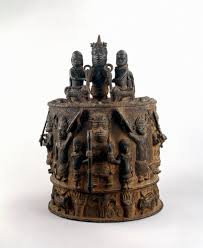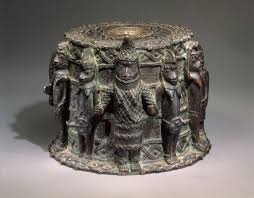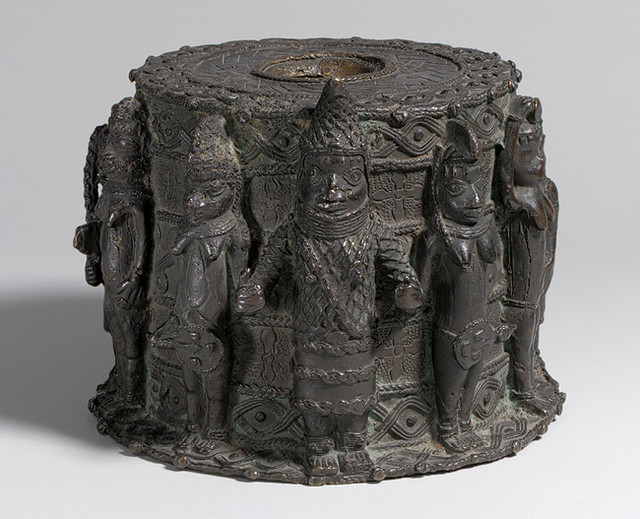Ikegobo – Cylindrical Altar to the Hand

The Benin kingdom (now Benin city) in Nigeria boasts of rich traditional and cultural practices. Being one of the oldest and powerful kingdoms in Nigeria especially during the 19th century, Benin is largely known for its inspiring art and rich ancestry one of which is the Ikegobo.
The Benin people believe the hand is associated with action and productivity. The hand is considered the source of wealth, status, and success for all those who depend on manual skill and physical strength. Benin people believe that the will for wealth and success must originate from the hands. In Benin, the hand is worshipped primarily by those who have achieved outstanding success or wealth.

The ancient practice of owning the Ikegobo according to historical records goes back to the 15th century during the reign of Oba Ewuare, the 15th century warrior king. The wars of expansion of the Benin kingdom that Ewuare waged and won gave him the motivation to become a devotee of the hand, since then Benin kings, chiefs, great artisans, and high achievers have possessed the Ikegobo.
As commemorative objects, Ikegobo is delicately and superbly made from materials like terracotta, wood or brass with figures carved in relief around their sides. Ikegobo typically has a cylindrical form and has a shape type of a round legless stool. It is usually placed on an altar stand, a semicircular platform whose straight edge is extended at both sides, which is carved on its top and sides with figures and other motifs in relief. The kind of Ikegobo given to a person depends on his or her status.
Read Also: Isiagu

A king’s Ikegobo is usually recognized by depicting him being flanked on his side by lesser members of the court and animals such as leopards, elephant heads and crocodiles inscribed on the altar. While a Queen mother’s Ikegobo is recognized by her size on the altar and the full complement of coral bead accoutrements associated with her position: the distinctive peaked crown, high collar, netted shirt, and crossed bandoliers. She is flanked by two female fan-bearers who support her arms, a position also assumed by the king when appearing in state. Two other female attendants carry containers, beyond them a pair of male servants, clad in cloth wrappers, hold staffs. The seven figures are superimposed onto a background of alternating bands patterned with floral, braid, and interlace designs. An opening at the top of the altar receives a carved ivory tusk.
Ikegobo is a symbol of power, authority, and status.
Have you seen an Ikegobo before? Please tell us more about it.
